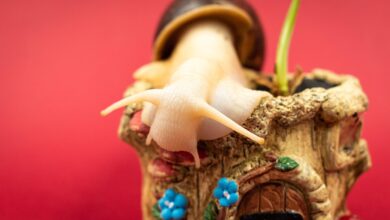The Ultimate Guide to Pets at Home | 7 Tips

Table of Contents
Our homes are sanctuaries not just for us, but for our beloved pets as well. These faithful companions bring joy, comfort, and unconditional love into our lives. Bringing a pet into your home can enrich your life in countless ways, but it also comes with a significant amount of responsibility. In this guide, we’ll walk through everything you need to know about keeping pets at home, from choosing the right animal companion to ensuring their well-being and happiness.
Introduction
Importance of Pets in Our Lives
Studies have shown that pets do more than just entertain us—they can improve our health, relieve stress, and even help us build stronger connections in our communities. They become an integral part of our family and daily routines, often serving as our workout partners, confidants, and the source of endless laughter and memories.
Benefits of Having Pets at Home
Pets at home can teach us compassion, responsibility, and patience. They welcome us with wagging tails after a long day, keep our laps warm during cold nights, and offer a silent listener whenever we need to voice our thoughts.
Choosing the Right Pet
Factors to Consider When Choosing a Pet
Selecting a pet requires careful consideration of your lifestyle, living space, budget, and time commitment. Do you have the time to train a puppy, or would a lower-maintenance cat suit your busy schedule? Consider allergies, the lifespan of the pet, and your ability to provide the care they need throughout their life.
Popular Pet Choices and Their Characteristics
From the steadfast dog and the independent cat to the tranquil fish and the chirpy bird, every pet has its distinct temperament and care needs. Your choice should align with your environment and how much energy and attention you can devote to them.
Setting Up a Pet-Friendly Home
Creating a Safe Environment
A pet-friendly home is a safe and conducive space for your pet to thrive. Eliminate hazardous items, secure trash bins, remove toxic plants, and ensure that all wires and small objects that could be potential choking hazards are out of reach.
Designing Pet-Friendly Spaces
Pets require their own space where they can relax and feel secure. Create a cozy corner with their bed, toys, and easy access to food and water.
Essential Supplies and Equipment
Stock up on essentials such as a collar, leash, food dishes, grooming tools, and toys. These items not only offer convenience but also contribute to your pet’s overall well-being.
Feeding and Nutrition
Choosing the Right Pet Food
Nutrition is central to a pet’s health. Research or consult with a vet to find quality food that fulfills your pet’s nutritional requirements based on age, weight, and health condition.
Proper Feeding Schedules and Portion Control
Stick to a feeding routine that suits your pet’s dietary needs. Overfeeding can lead to obesity, while underfeeding might cause nutritional deficiencies.
Special Dietary Considerations
Some pets may require specialized diets due to health issues like allergies or sensitivities. Always monitor their reaction to new foods.
Exercise and Enrichment
Importance of Exercise for Pets
Physical activity keeps your pet healthy and agile. Daily walks or play sessions are vital, not only for their physical health but also for their emotional well-being.
Fun and Engaging Activities for Pets at Home
Toys, games, and training sessions provide both exercise and cognitive stimulation. Invest in a variety of toys to keep your pets entertained, especially when you’re not at home.
Mental Stimulation and Enrichment
Challenge your pet’s mind with interactive toys or obstacle courses. Exposure to new experiences and environments is also crucial for cognitive development.
Healthcare and Grooming
Regular Vet Visits and Vaccinations
Scheduled vet visits are essential for preventive healthcare, vaccinations, and to catch any health issues early on. Build a good relationship with your vet, and heed their advice on health and nutrition.
Grooming and Hygiene Tips
Regular grooming, including trimming nails, brushing teeth, and bathing, helps maintain your pet’s hygiene. It also allows you to check for any abnormalities on their skin or fur.
Common Health Issues and How to Address Them
Stay informed about the signs and symptoms of common illnesses in pets. Immediate veterinary attention can make a significant difference in outcomes.
Training and Behavior
Basic Training Techniques
Training imparts good manners and ensures your pet is approachable and safe around other people and pets. It sets boundaries and helps your pet understand their role in the home.
Dealing with Behavioral Issues
Address any behavioural issues early with professional help if needed. Consistency and understanding are key.
Positive Reinforcement and Rewards
Reward your pet for good behavior with treats, praise, or play. Positive reinforcement strengthens your bond and makes learning enjoyable for them.
Socialization and Interaction
Socializing Pets with Humans and Other Animals
An adequately socialized pet is well-adjusted and less likely to exhibit anxiety or aggression. Introduce your pet to a variety of people and other animals under controlled circumstances.
Building a Bond with Your Pet
Spend quality time each day with your pet. Learn their likes, dislikes, and the unique ways they communicate love and contentment, as well as stress or discomfort.
Understanding Pet Communication
Pets communicate in many ways, from body language to vocalizations. Pay attention to these cues to respond effectively to their needs.
Conclusion
Embracing a pet as part of your family is a remarkable experience that calls for commitment and love. It is a fulfilling journey filled with challenges but also with immeasurable rewards. Be patient, provide them with a loving home, and the joy they’ll bring to your life will be beyond words.
Pets at home offer us a special kind of companionship. While the responsibilities are great, the love and laughter they bring into our lives make every effort worthwhile. Whether they have fins, feathers, or fur, they teach us empathy, offer comfort, and remind us of the beauty of caring for another life.
3 Tips to Remember
- Adaptability: Your home and routine will adapt around your pet. Be flexible and open to change as it comes.
- Responsibility: Owning a pet is a long-term commitment. Make decisions considering their best interest in mind.
- Observation: Always be attentive to your pet’s behavior and health. Early detection can prevent issues and prolong their quality of life.
Remember, the right pets at home can make our lives whole. So, let’s cherish our furry, scaled, or feathered friends and make their lives as happy as they make ours.
Read on for Information at: bestpetsforhome.com/



